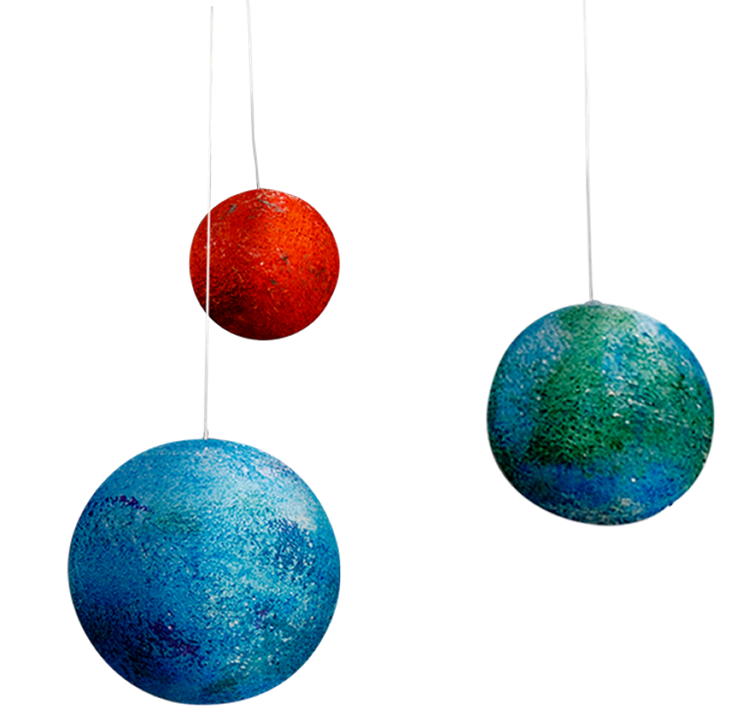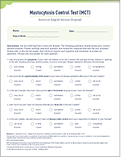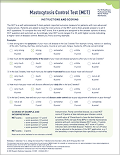ISM symptoms can create unpredictability and impact patients’ everyday lives1,2
In a Blueprint Medicines–sponsored survey (n=32)2*
72%
reported avoiding leaving home
56%
reported reducing working hours
28%
reported going on medical disability
ISM may lead to serious health consequences4-6
In a Blueprint Medicines-sponsored survey of patients with ISM (n=37), 86% reported moderate to severe symptom burden despite taking a median of 3 over-the-counter medications and 2 prescription medications for their ISM symptoms.2*
*In the Blueprint Medicines–sponsored TouchStone SM Patient Survey, US adults with a self-reported SM diagnosis (N=56) completed an online survey of 100 items. An analysis was conducted in patients with ISM (n=37), including 32 patients with moderate to severe ISM (defined as an ISM-SAF TSS ≥28) and results were analyzed using descriptive statistics. These analyses were made from the TouchStone SM Patient Survey but have not been published.2
†Survey data were collected from 40 adults with ISM meeting the WHO diagnostic criteria, including the validated ISM-SAF and the 12-item Short-Form Health Survey. ISM burden was analyzed by comparing moderate to severe TSS scores with mild TSS scores using Kruskal–Wallis and Fisher’s exact tests.4
‡In a retrospective study of Mayo Clinic data (full system, 2005-2023), 203 patients with ISM were identified and matched 1:10 with 2030 patients without ISM on demographic and clinical characteristics (age, sex, race, BMI, smoking status, Quan-Charlson Comorbidity Index [CCI] score, and year of index [defined as first ISM diagnosis for ISM patients]), generating comparable cohorts with ISM diagnosis being the differentiating factor between groups.5
§As described by an expert-panel review of adult-onset mastocytosis (predominantly indolent population).6
BMI=body mass index; HCP=healthcare provider; ISM=indolent systemic mastocytosis; ISM-SAF=Indolent Systemic Mastocytosis-Symptom Assessment Form; SM=systemic mastocytosis; TSS=total symptom score; WHO=World Health Organization.
Assess disease control in ISM with the Mastocytosis Control Test (MCT)
The MCT is a validated, 5-question patient-reported outcomes tool designed to assess disease control and quality-of-life impact in adults with non-advanced mastocytosis, including ISM.7 It helps distinguish patients with poorly controlled disease from those with well-controlled disease. The MCT comes with a 1-page instruction sheet for healthcare providers to help interpret results.*
Mastocytosis Control Test (MCT)
Download the MCTMCT Instructions and Scoring
Download the Instructions*The MCT was developed at Charité by a team led by PD Dr. Frank Siebenhaar, PD Dr. Karsten Weller and Prof. Dr. Marcus Maurer with Dr. Cem Akin as a co-author. Blueprint Medicines (BPM) has secured a commercial license for distribution of this test to US healthcare providers only. If you have any questions on how this test was developed, please refer to the publication and/or BPM Medical Information at medinfo@blueprintmedicines.com or 1-888-BLU-PRNT (1-888-258-7768).7
Explore how AYVAKIT works
MOA
References: 1. Pardanani A. Am J Hematol. 2023;98(7):1097-1116. 2. Data on file. Blueprint Medicines Corporation, Cambridge, MA. 2023. 3. Jennings SV et al. Immunol Allergy Clin North Am. 2018;38(3):505-525. 4. Zeiger RS et al. J Allergy Clin Immunol Pract. Published online October 28, 2024. doi:10.1016/j.jaip.2024.10.021 5. Data on file. Blueprint Medicines Corporation, Cambridge, MA. 2024. 6. Hartmann K et al. J Allergy Clin Immunol. 2016;137(1):35-45. 7. Siebenhaar F et al. J Allergy Clin Immunol Pract. 2025;13(3):647–657.


